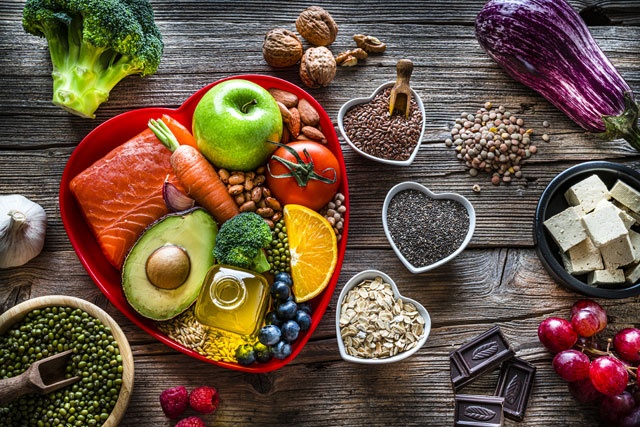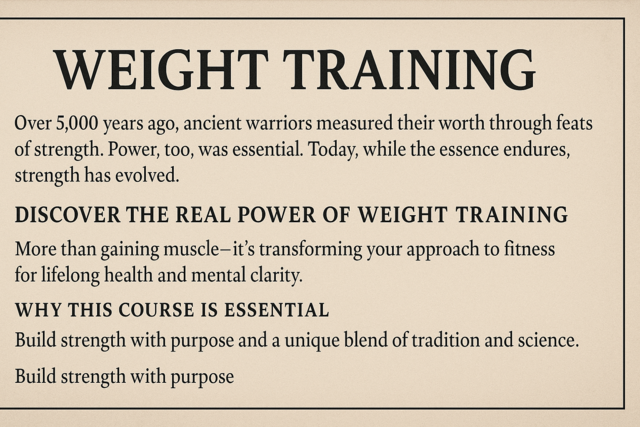What determines your metabolism?
Even the minimal amount of work that you do when sleeping, like breathing, dreaming, growing fingernails, and repairing damaged cells, requires energy. Resting metabolic rate is the amount of energy you would use if you did absolutely nothing but rest all day long. Surprisingly, just staying alive burns about 60-80% of your body's recommended caloric consumption for the day.
When you start to add even simple activities, like making breakfast and walking down a hallway, into your daily routine, your metabolic rate increases. Every bit of physical activity you perform during the day increases your metabolic rate: everything from housework, to intentional exercise, to tapping your toes to music. People with a physically active job, like a mail carrier or gardener, will have a higher metabolic rate than someone with a sedentary job, like a computer programmer.
In addition to activity level, some components of your body require more energy to support. Lean body mass like bones, teeth, and muscle require more metabolic support than storage material (like fat). So the more muscle mass you have, the higher your metabolic rate will be, and hence, the more calories you will burn even when you are just sitting in your car.
As you age, you tend to lose muscle mass each year. This is one reason why people's metabolism tends to slow with age (hormonal changes also play a role). At a certain point, you need to exert a concerted effort to maintain lean muscle mass, by intentionally lifting weights or performing other weight-bearing activities, to avoid losing strength.
In addition to age, genetics also play a role in metabolism. Most people can look around at a family gathering and notice that their siblings, parents, and cousins share a particular body type. This is not to say that DNA is your destiny, just because your mother was always overweight does NOT mean that you are doomed to be overweight, and your family history should never discourage you from pursuing good nutrition and health goals. But if you come from a family that tends to carry some extra pounds, you will have to work harder to increase your activity level and maintain lean muscle mass to keep your metabolism burning bright as you age.
Energy balance
In terms of nutrition, energy balance means consuming just enough food to keep your body going and fuel your daily activities without losing weight or providing excess calories that need to be stored as fat. The amount of calories that you need to consume every day to attain energy balance depends on your gender, activity level, and age.
Using an online calculator like the one provided by the American Council on Exercise (ACE), can help you arrive at a close estimate of your daily calorie requirements.
For example, a healthy adult woman in her 40s, who weighs about 140 lbs. and gets regular, intense exercise 6-7 days per week, should consume 2284 calories per day to maintain her weight. If she wished to lose weight, she would need to cut back about 100 calories per day while maintaining or increasing her exercise intensity and duration.
Once you have an idea of how much you should be eating, it's helpful to get a concrete idea of how much you really do eat in the course of a day.
Food journals
A food journal is like a diary, in which you list everything that you eat and drink during a specific period of time. The purpose of a food journal is to get an accurate idea of what you really eat every day. Writing everything down as you go provides you with a list you can look at later in the day. Many people are surprised by the quantity they actually eat, and it can be particularly surprising when you add up calorie counts of some favorite beverages, snack foods and restaurant meals. When you start a nutritional program, food journals give you a place to begin looking for small changes that are easy to make. You might switch from a 16-ounce mocha latte with whole milk and whipped cream, at 370 calories, to a slightly smaller 12-ounce drink with skim milk and no whipped cream, for just 170 calories. That single change (all other things staying the same) amounts to 200-calorie reduction. If this is a drink you enjoy every day, then that single change could amount to about a pound of weight loss per week for several weeks. Health experts recommend keeping a food journal for at least three days, but even a single day of journaling will give you an accurate picture of your current nutritional profile.
You can keep a food diary electronically (on your phone or iPad) and you can just make notes on a single sheet of paper throughout the day. Write down everything, including quantities, of food and beverages. If you eat a packaged food item with a nutritional label, you can also write down the calorie content of the foods, but if the item is not labeled, you can usually look up calorie estimates online. There is an array of applications and online calculators for estimating calories. Some apps will help you total up everything that you eat all day.
At the end of the day, total up your consumption and see where you stand against your goal. Remember: it is important to eat within 100-200 calories of your goal range. Starving yourself will deprive your body of the nutrients it needs to function, and in the long term, you will end up compromising muscle mass and lean body tissue.
Food journaling is useful, but it is most effective as a short-term tool. No one really wants to keep a food journal for weeks or months at a time, and focusing too much on the ins and outs of food has the potential to contribute to eating disorders. It's best to do it for a few days at the start of a healthy life changing plan, and then again a few months later when you feel like you've reached a plateau.
Exercise and metabolism
Physical activity during the day is the second-largest factor determining your metabolism. Participating in any level of activity is better than being completely sedentary, but if your goal is weight loss, there are a few types of exercise that may benefit you faster than others.
Resistance training. Working with weights, resistance bands, or your own body weight helps build muscle mass. Strong muscles not only help you with normal daily activities like carrying groceries and vacuuming the floor, they also help increase your resting metabolic rate, so that even when you are sleeping, you are using more energy.
High-intensity work. Everyone's definition of high-intensity is different. For one person, it's a sprint up three flights of stairs and for another, it's just walking to the mailbox. High intensity is work that you can only maintain for a very short period of time (3-5 minutes max). Working at a high intensity does increase your risk for injury, so make sure you are in generally good health and have your doctor's approval. Once you have your doctor's clearance, alternate short bouts of high effort with longer bouts of moderate effort. For example, you might walk for five minutes, jog for five, and sprint for two minutes, and then repeat. This tactic raises your heart rate higher than extended, long-term exercise, increasing your calorie burn and also extending the amount of time your body's metabolism continues working at a higher rate after the workout is over.
Returning to normal
After you exercise, your body has a lot of work to do to return your muscles to a normal state. In this way, exercise is kind of like having a party, after everyone leaves, you have to spend a lot of time cleaning the kitchen and throwing away paper plates so that your house will be ready for normal activities again. Inside the cells of your body, similar work is going on: you are removing the waste products of exercise, restocking energy sources, and repairing cellular damage. This work requires energy, and that's why you not only burn calories during exercise, your body keeps on burning them for several hours after you finish working out. So exercise amps up your metabolism for a lot longer than the amount of time you actually invest.
Calorie burn
The only way to know exactly how many calories you burn in a particular exercise setting is to participate in a specially designed study, in which technicians attach a mask to your face while you work out and measure the oxygen that you exhale. This is fairly impractical for most people, so instead we use online estimates.
The American Council on Exercise has a handy online calculator. To use this tool, you enter your weight and select the activity, then choose the amount of time you exercised. The list of possible activities is fairly extensive, but if your exact sport isn't there, you can make a close estimate.
Entering your correct weight into a calorie calculator is important, because the more you weigh, the greater your calorie burn usually is (because it takes more work to move a heavier body around). Unfortunately, this also means that, as you lose weight, you burn fewer calories doing the same activity. This is when it's helpful to progress to more intense activities, like shifting from walking to jogging.
Exercise machines
Many exercise machines have built-in calorie counters. Although these tools can be helpful, they are not always 100% accurate (they frequently over-exaggerate your actual burn). To get the most accurate picture, make sure you enter your exact weight. Holding the handlebars or railing on equipment will actually make the work easier for you, which will skew the calorie estimates. You can also crosscheck calorie estimates against one of the online calculators, plugging in your weight, exercise duration, and speed. If there are huge differences in estimates, then you know one or the other machine is wrong.
Weight loss






























